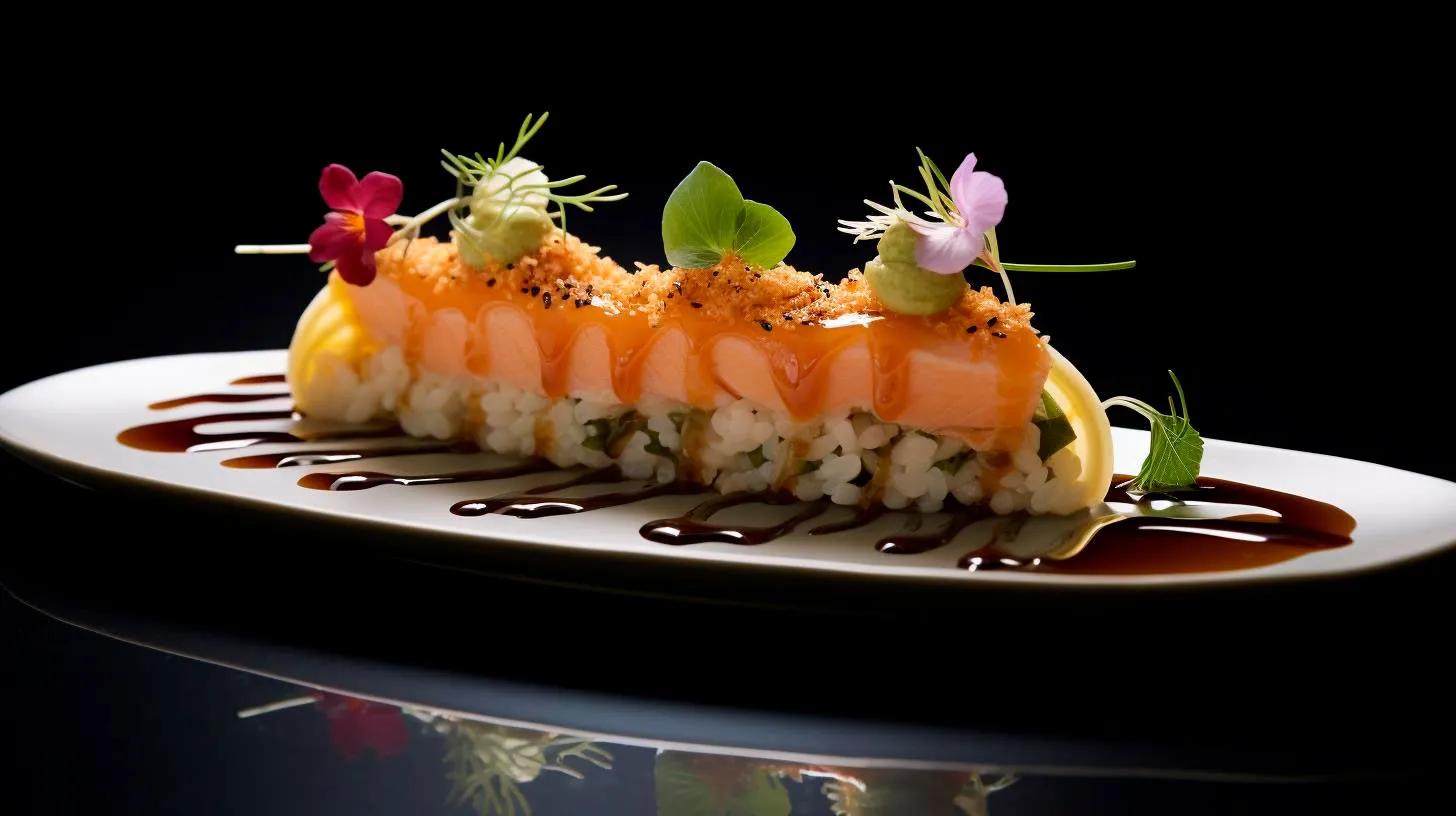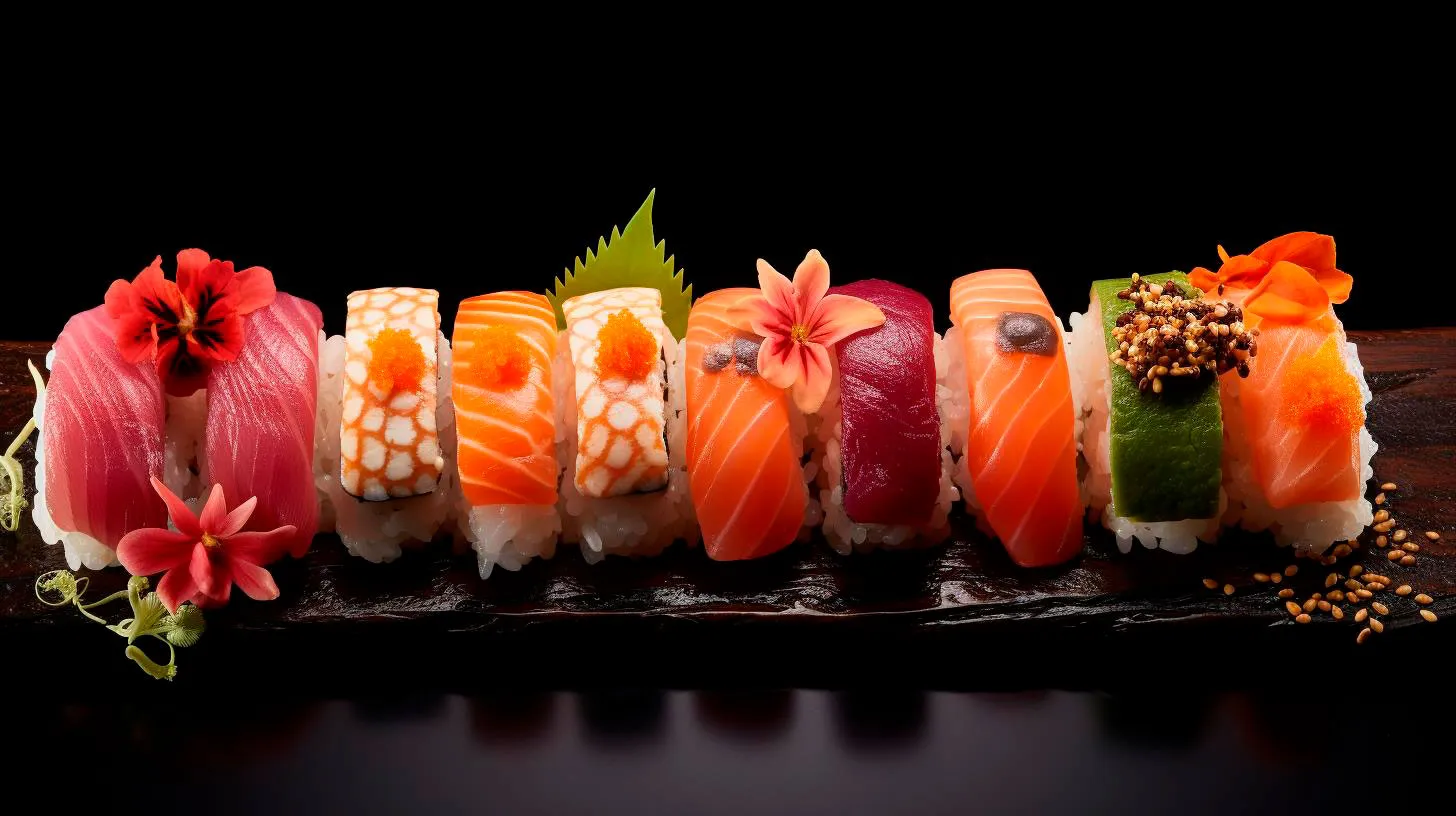Secret Techniques for Achieving the Ideal Texture in Sushi Rice Vinegar
One secret weapon that can elevate your sushi rice is the use of vinegar. In this article, we will explore the secret techniques for achieving the ideal texture in sushi rice vinegar.
The Importance of Sushi Rice Texture
Before we delve into the techniques, let’s understand why the texture of sushi rice is so important. Sushi rice should be moist, sticky, and have a slightly firm texture. This allows the rice to hold its shape when rolled and provides a delightful chewiness that complements the other ingredients in the sushi roll.
A well-executed sushi rice texture is crucial in ensuring a harmonious balance between the tangy vinegar and the delicate flavors of the fish or vegetables. It is the key to creating a sushi roll that not only tastes incredible but also has an appealing visual appeal.
Choose the Right Rice
Choosing the right rice is the first step towards achieving the ideal sushi rice texture. Look for short-grain rice, often labeled as sushi rice or japonica rice. Short-grain rice has higher starch content, which is responsible for the stickiness that makes sushi rice so delightful.
Key Takeaway: Opt for short-grain rice, as it contains higher starch content, resulting in stickier sushi rice.
Rinse and Soak the Rice
Properly rinsing and soaking the rice before cooking is another secret technique to achieve the ideal sushi rice texture. Rinsing the rice removes excess starch, which can cause the rice to become gummy. Place the rice in a colander and rinse it under cold water until the water runs clear.
After rinsing, soak the rice in cold water for about 30 minutes. This step helps the rice absorb moisture evenly, leading to a consistent and fluffy texture.
Key Takeaway: Rinse the rice thoroughly to remove excess starch and soak it in cold water to ensure even moisture absorption.
The Vinegar Infusion
The secret technique lies in the seasoning of the sushi rice with vinegar. Vinegar not only adds a tangy flavor but also helps in preserving the rice. The traditional vinegar used in sushi rice is rice vinegar, which has a mild and subtle taste.
While there is no set rule for the vinegar-to-rice ratio, a common guideline is to use approximately one part vinegar for every five parts of cooked rice. This ratio can be adjusted according to personal preference. To evenly distribute the vinegar flavor, gently fold the vinegar into the rice using a wooden spatula or rice paddle.
Key Takeaway: Use rice vinegar in the appropriate ratio to preserve the rice and add a tangy flavor. Fold the vinegar gently into the rice for even distribution.
The Art of Mixing the Rice
Mixing the rice after adding the vinegar is an art that requires a delicate touch. Overmixing can result in mashed rice grains, while undermixing can leave unevenly seasoned pockets. Use a cutting and folding motion to mix the rice and vinegar. This technique helps distribute the vinegar evenly without crushing the rice grains, resulting in a well-infused and textured sushi rice.
Key Takeaway: Master the cutting and folding motion to mix the rice and vinegar without crushing the grains.
Letting the Rice Rest
Allowing the sushi rice to rest is crucial for achieving the ideal texture. Once mixed with the vinegar, let the rice rest for about 10 minutes. During this time, the rice absorbs the flavors while slightly cooling down. This resting period helps the rice firm up, making it more cohesive and allowing it to hold the shape when rolled into sushi.
Key Takeaway: Give the sushi rice a resting time of approximately 10 minutes to absorb flavors and firm up, ensuring a cohesive texture.
The Final Touch
Once you have achieved the ideal texture in your sushi rice, here are some final tips to perfect your sushi-making experience:
- Keep the rice covered with a damp cloth to prevent it from drying out.
- Use a wooden spatula or rice paddle when handling the sushi rice to avoid flattening the grains.
- Maintain a clean and moist surface to work on while rolling sushi to prevent sticking.
Key Takeaway: Keep the rice moist, use appropriate utensils, and maintain a clean work surface to ensure a seamless sushi-making process.
In Conclusion
Mastering the ideal texture in sushi rice vinegar is a combination of precise techniques and attention to detail. By choosing the right rice, rinsing and soaking properly, and skillfully seasoning and mixing the rice, you can elevate your sushi-making skills to new heights. Remember to let the rice rest and follow the final tips to perfect your sushi rolls. With these secret techniques in your culinary arsenal, you’ll be impressing your friends and family with mouthwatering sushi creations!
Expert Tips and Tricks for Infusing Sushi Rice with Delectable Vinegar Flavor
One crucial element that elevates sushi rice to another level is the infusion of delectable vinegar flavor. In this article, we will explore expert tips and tricks to help you infuse your sushi rice with an irresistible vinegar taste.
The Importance of Vinegar in Sushi Rice
Before we dive into the tips and tricks, let’s understand why vinegar is a vital component in sushi rice preparation. The addition of vinegar serves several purposes:
- Enhances the overall flavor profile of the sushi roll
- Creates a pleasant tangy taste that balances the richness of other ingredients
- Acts as a natural food preservative
- Helps in maintaining the ideal texture and stickiness of the rice grains
Expert Tips and Tricks for Infusing Vinegar Flavor
1. Choose the Right Rice
The type of rice you use for sushi is critical. Opt for short-grain sushi rice, known for its stickiness and ability to absorb flavors. It’s essential to rinse the rice thoroughly before cooking to remove excess starch, which can make the rice clumpy.
2. Cook the Rice to Perfection
Cooking sushi rice requires precision. Follow these steps to achieve perfectly cooked rice:
- Use a 1:1 ratio of rice to water
- Bring the rice to a boil, then reduce the heat and simmer for 15 minutes
- Let the cooked rice rest, covered, for 10 minutes to allow it to steam and become fluffy
3. Prepare the Vinegar Mixture
The vinegar mixture is the heart and soul of sushi rice. Here is a simple recipe:
- Combine rice vinegar, sugar, and salt in a saucepan
- Heat the mixture over low heat until the sugar dissolves
- Allow the mixture to cool down before using
4. Master the Rice Vinegar Technique
Add the vinegar mixture to the freshly cooked rice using the Shari technique:
- Transfer the rice to a wooden or non-reactive bowl
- Gently pour the vinegar mixture over the rice
- Use a wooden spatula or rice paddle to fold the rice, while simultaneously fanning it to cool it down. This step ensures even distribution of vinegar and prevents the rice from becoming too sticky
5. Don’t Overdo it!
When it comes to adding vinegar to sushi rice, less is more. The ratio of vinegar to rice should be around 1:10. Adding too much vinegar can overpower the flavors of the sushi roll and make the rice taste sour.
Key Takeaways
Infusing sushi rice with a delectable vinegar flavor requires attention to detail and careful execution. Here’s a recap of the expert tips and tricks:
- Choose short-grain sushi rice and rinse it thoroughly before cooking
- Follow precise cooking instructions to achieve perfectly cooked rice
- Prepare a vinegar mixture with rice vinegar, sugar, and salt
- Use the Shari technique to combine the vinegar mixture with the cooked rice
- Remember that a little vinegar goes a long way
Mastering the art of preparing sushi rice is essential for creating authentic and delicious sushi rolls. By infusing the rice with a delightful vinegar flavor, you can elevate your sushi-making skills to new heights. So, get your ingredients ready, follow these expert tips, and impress your friends and family with homemade sushi rolls bursting with flavor!
Mastering the Art of Balancing Flavors in Sushi Rice Vinegar
In this article, we will dive into the world of sushi rice vinegar and explore the techniques and secrets to create a delightful balance of sweet, sour, and umami flavors.
The Role of Sushi Rice Vinegar
Sushi rice vinegar is a unique ingredient specifically crafted for sushi-making. It not only adds flavor but also helps in preserving the rice and preventing its spoilage. The vinegar is responsible for giving sushi rice its characteristic tanginess while balancing the sweetness and umami of the rice. Understanding the role of sushi rice vinegar is crucial in accomplishing a harmonious combination of flavors.
What Makes a Great Sushi Rice Vinegar?
Creating a great sushi rice vinegar is an art in itself. Here are some key factors that contribute to the quality of this essential ingredient:
- Acidity Level: The vinegar must have just the right level of acidity to enhance the sushi rice without overpowering it.
- Balance of Sweetness: A mild sweetness complements the natural sweetness of the rice, creating a harmonious blend of flavors.
- Umami Essence: The vinegar should contain umami-rich ingredients such as konbu (edible kelp) or bonito flakes to elevate the taste profile of the rice.
- Quality Ingredients: Using high-quality rice vinegar made from fermented rice or sake contributes to a superior sushi rice vinegar.
The Art of Balancing Flavors
Now that we understand the significance of sushi rice vinegar, let’s delve into the techniques of achieving the perfect flavor balance:
1. Proportions Matter
Getting the right balance involves determining the appropriate amount of sushi rice vinegar to use in relation to the amount of rice. Generally, a ratio of 1 part vinegar to 5 parts cooked rice is preferred, but it can be adjusted to personal taste.
2. Proper Seasoning
To ensure the vinegar coats every grain of rice, it is essential to fan the cooked rice while gently incorporating the vinegar mixture. This technique allows the flavors to distribute evenly throughout the rice, enhancing every bite.
3. Sweetness and Umami
Adding a touch of sweetness and umami elevates the flavor profile of sushi rice. Incorporating a small amount of sugar or mirin (sweet rice wine) and a dash of konbu-infused vinegar or bonito flakes gives the rice a delightful complexity.
Key Takeaways
Mastering the art of balancing flavors in sushi rice vinegar requires practice, attention to detail, and understanding the significance of each ingredient. By keeping the following key takeaways in mind, you can elevate your sushi-making skills:
- Use high-quality sushi rice vinegar with the right acidity level.
- Balance sweetness and umami to enhance the overall flavor profile.
- Pay attention to proper proportions and seasoning techniques.
Remember, sushi-making is a journey of exploration, experimentation, and continuous improvement. With patience, practice, and a well-balanced sushi rice vinegar, you can create sushi that mesmerizes the senses and delights the palate, immersing yourself in the incredible world of sushi.



